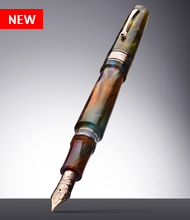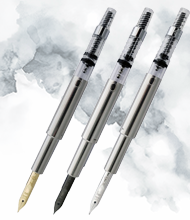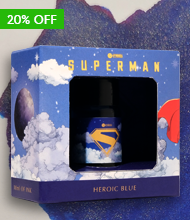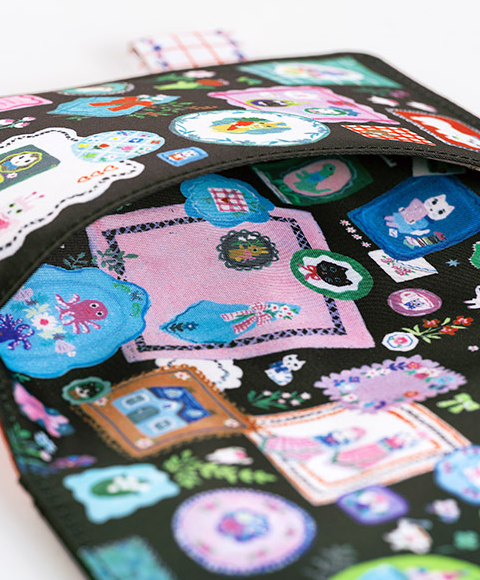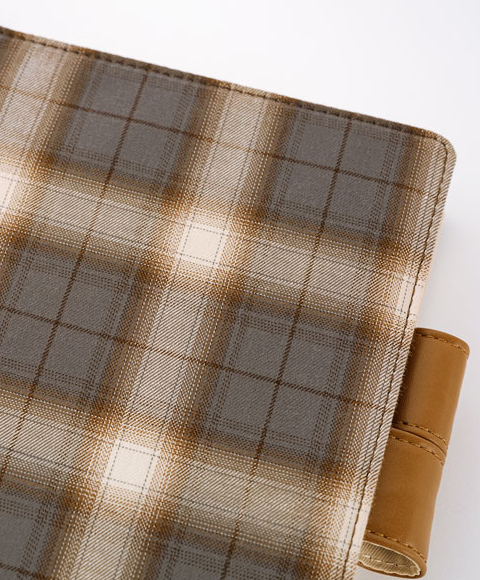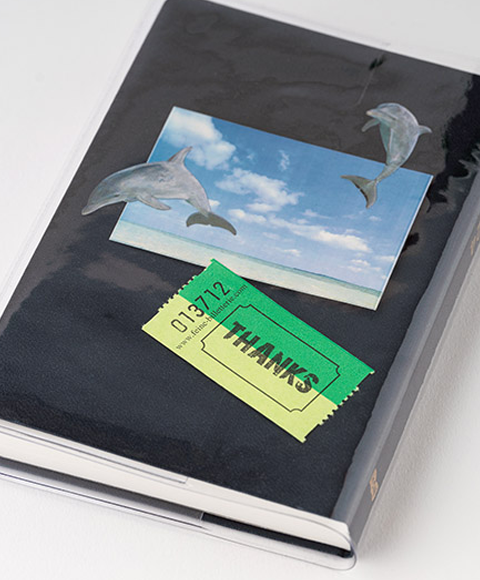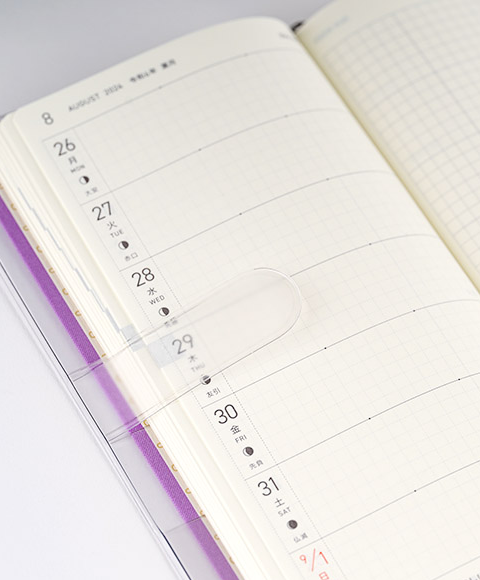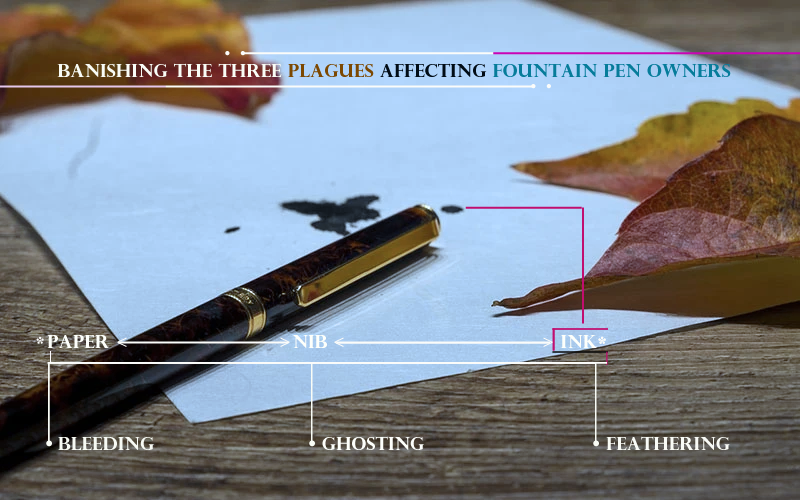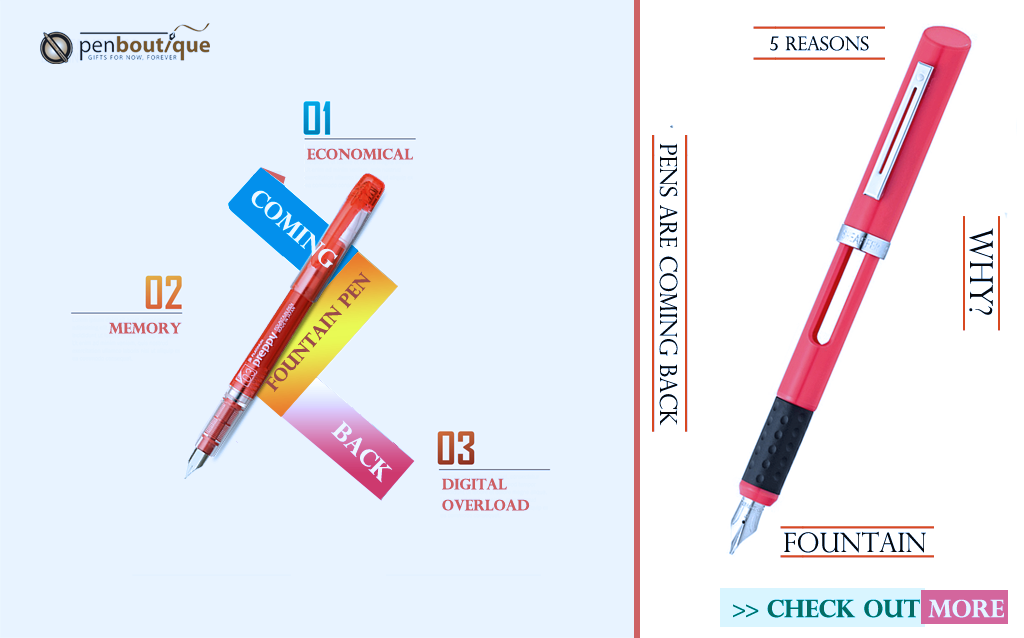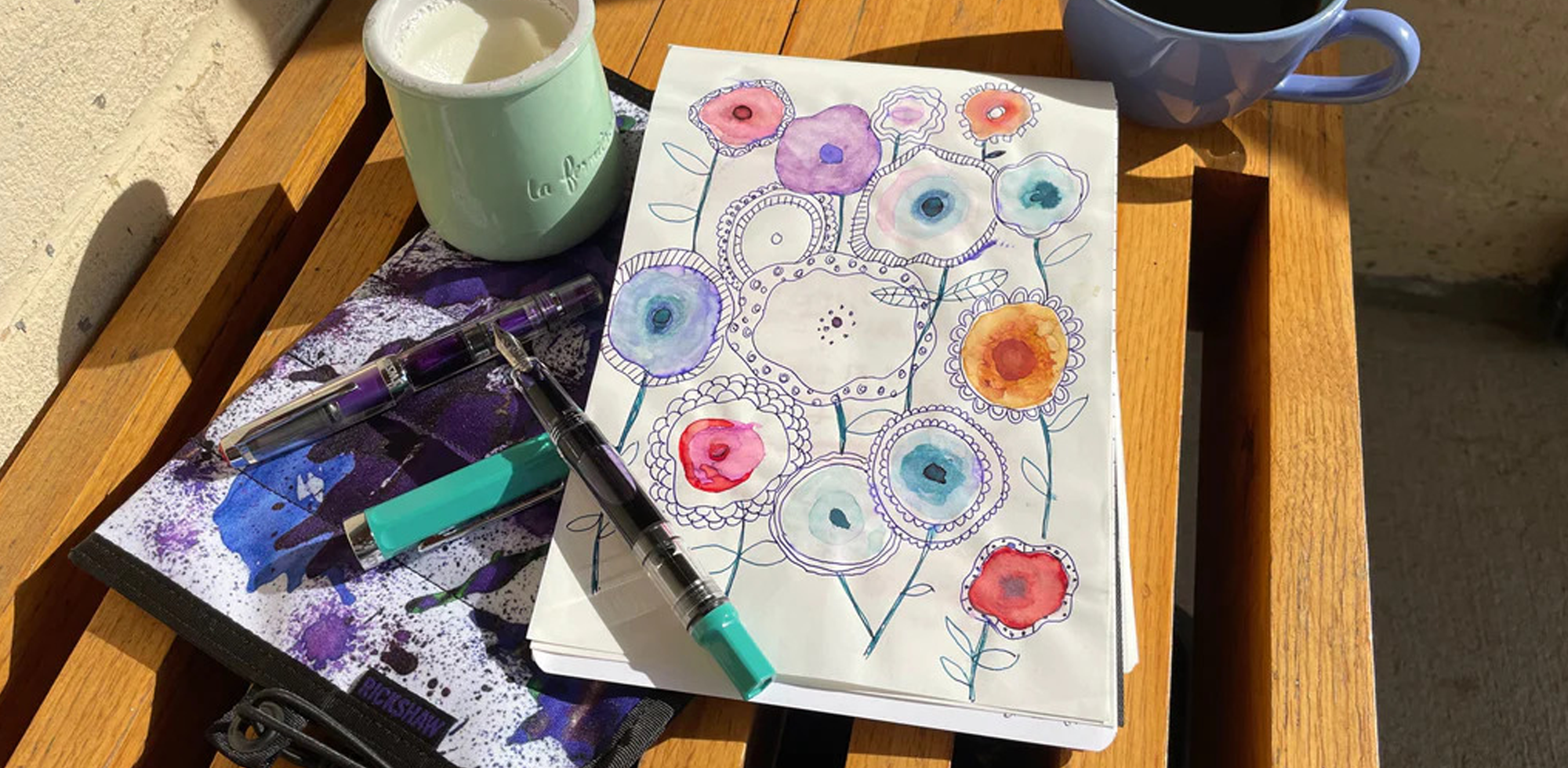
Remember the day when you found the perfect fountain pen? It felt great in your hand. The grip was comfortable, the balance was perfect, and you didn’t even notice the weight in your hand. You loaded it with ink, pulled out some paper, and set to work. To your horror, your writing was not clean or crisp. The lines look blurry. You flip the page over, and the ink has bled through to the other side. You know right away that you have a problem.
You have just encountered the three plagues of fountain pens – feathering, bleeding, and ghosting. Luckily, overcoming these issues is much easier than overcoming disease epidemics, but it takes some detective work.
The Three Plagues
Writing with a fountain pen and achieving the desired result is more challenging than using your everyday ballpoint pen. While ballpoint pens and their ink are compatible with just about any paper you encounter, the same is not true of fountain pens and inks. Using paper incompatible with your paper or a pen with a particularly juicy nib can create problems for you to diagnose and treat.

1. Bleeding – Most individuals are familiar with bleeding from past experiences with markers. Many a school project has bled through the paper onto the kitchen table. Bleeding ink is not only unsightly, but it completely prevents you from using both sides of a piece of paper. It may even ruin successive sheets in a notebook. Bleeding happens more often with poor quality paper or paper exposed to high humidity levels.
2. Ghosting – If you think you are seeing things when you flip your paper over, you are probably dealing with ghosting. Ghosting is the ability to see your writing through the paper. While it doesn’t ruin the work on the front side of the paper, it does cause problems if you want to write on the back, such as a diary or day planner.
3. Feathering – When you write, the ideal result is crisp, clean lines that compliment your writing style. Feathering occurs when the ink soaks into the paper fibers irregularly, making the lines look fuzzy. It most commonly strikes when using cheap or loosely woven papers. Newsprint or low-quality copy paper are notoriously bad for feathering.
While the paper is most often the culprit, your nib and ink can also play a part. A wet or juicy nib lays down more ink than a fine nib. The excess ink has time to creep along the paper fibers before it dries. Likewise, wetter, more viscous inks with prolonged drying times are more prone to cause feathering as they soak into the paper rather than sitting on top of it as it dries.
Feathering can be particularly problematic when using paper supplied by a client. If a client sends you 200 wedding announcements to calligraph and your ink starts bleeding through the paper on the first one, you may not have the option to change papers. You need to find a solution and fast.
The Antidote
Bleeding, ghosting, and feathering are often the result of using a paper and ink combination that is incompatible. However, your choice of pen and nib may also be a contributing factor. To effectively overcome these three issues, you will need to identify the problematic piece of the puzzle accurately.

1. Nib – You likely have your favorite nibs because of how it glides across the paper or the thickness of the lines it makes. However, if your nib is wet, it may be allowing the paper to draw down the ink too quickly. Before the excess ink has a chance to dry, it may spread out or soak through your paper. Consider trying a finer nib that lays down less ink.
2. Ink – Every fountain pen ink is unique and behaves in distinctive ways. Even different colors within the same line may interact differently with the paper. Determine what type of ink you are using. Is it wet and viscous, or is it drier? Does it have a long or short drying time? Does it soak into the paper right away, or does it sit on top? All these factors will affect its behavior.
If you are using particularly thin ink, you can try adding an ink thickener. Thickening ink, however, is not an exact science. It will take some trial and error to get the proper viscosity so that the ink still flows effortlessly from your pen but does not soak the page. Try mixing a little ink in a separate container first to make sure the ink and thickener are compatible. Never add thickener directly to the whole bottle.
3. Paper – Among fountain pen enthusiasts, the best papers are known as fountain pen friendly. These high-quality papers are designed specifically for fountain pens and work well with many different nibs and inks. When buying fountain pen friendly paper, pay attention to the weight of the paper as well as the finish. Heavier weight papers work well in preventing ink bleeding and ghosting. However, they may still exhibit problems with feathering if the finish on the paper is not up to par.
Fountain pen paper often has an outer finish applied at the end of the manufacturing process. After a thin outer coating of glue, starch, or rosin is applied, the paper is rolled between hot rollers that use high temperature and pressure to fix this coating in place. The result is a smooth paper that resists absorbing fountain pen ink before it dries. Tomoe River paper is a favorite for many fountain pen owners for its excellent resistance to feathering and bleeding. This paper is on the thinner side and thus is still subject to ghosting.
Overcoming ink, paper, and nib incompatibilities may sound like an arduous task, but it is a great excuse to try papers and inks that you may not have thought to try. If you need help finding the best combination for you, try visiting your local pen retailer. Pen Boutique in Columbia, MD, has been helping customers find the right pens, inks, and paper since 2004. Their expert knowledge and expansive inventory provide an option for every pen enthusiast.

